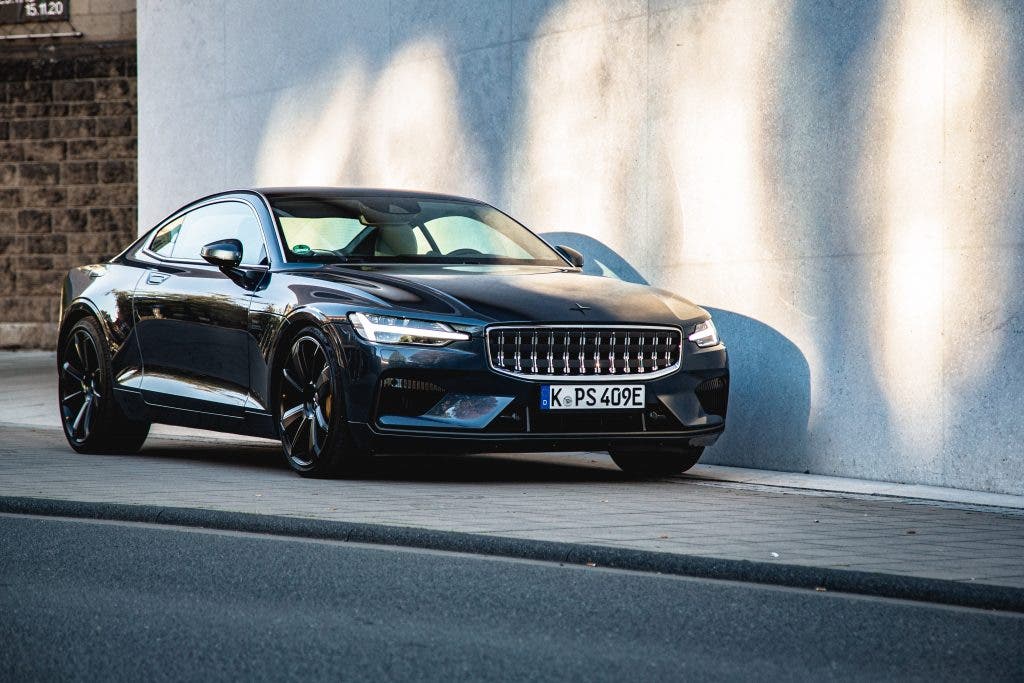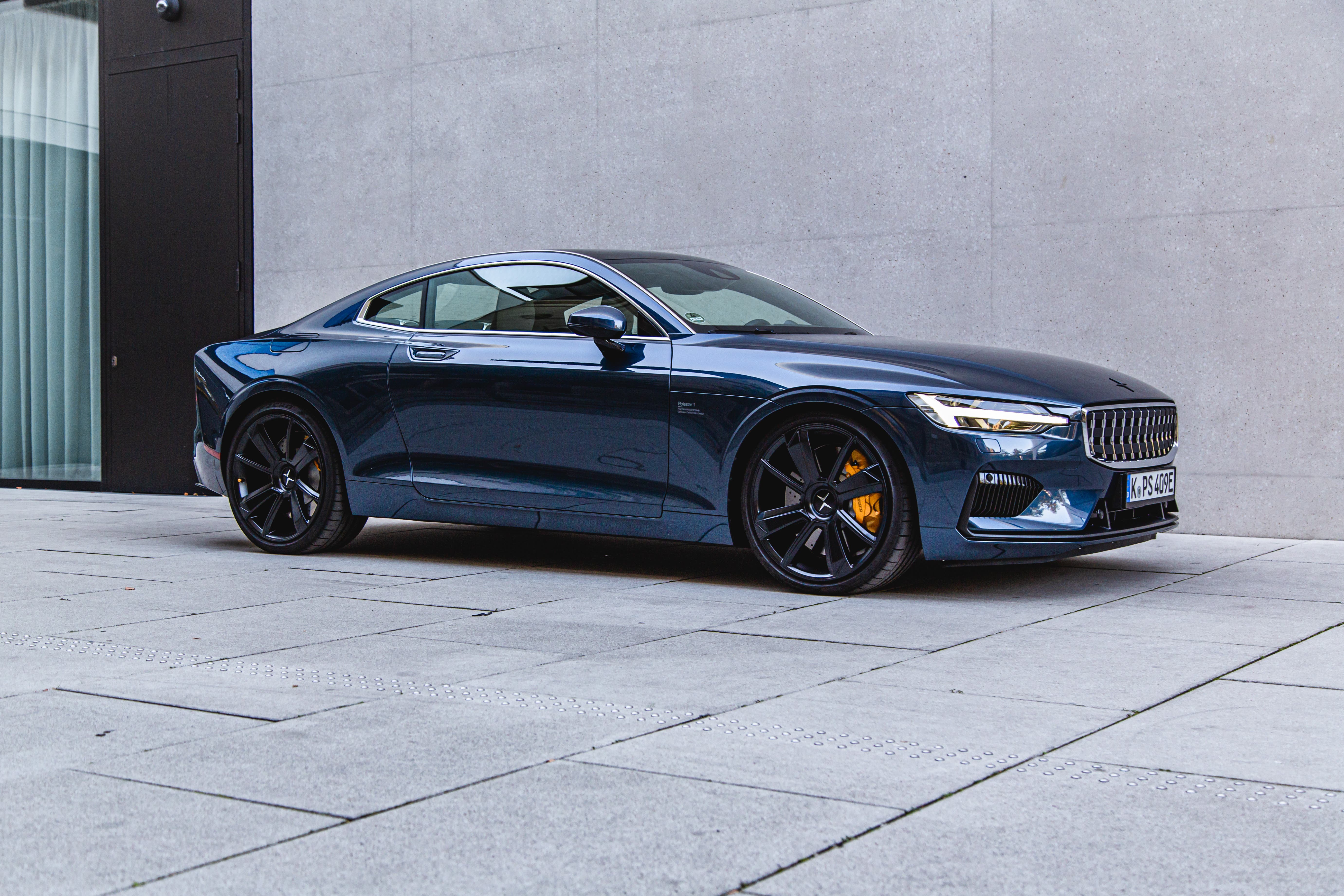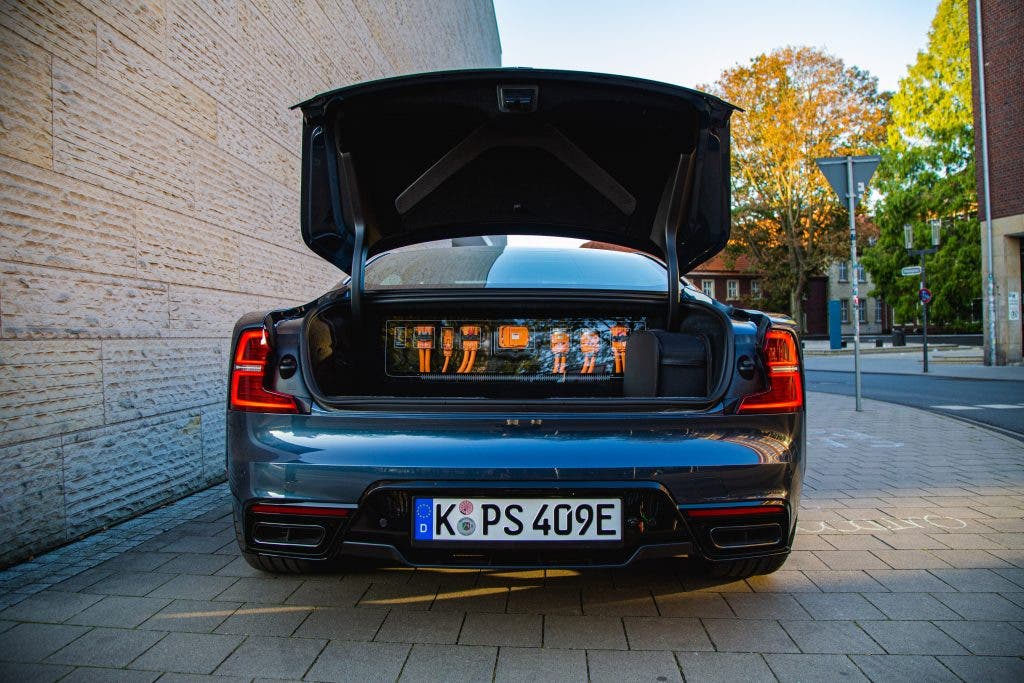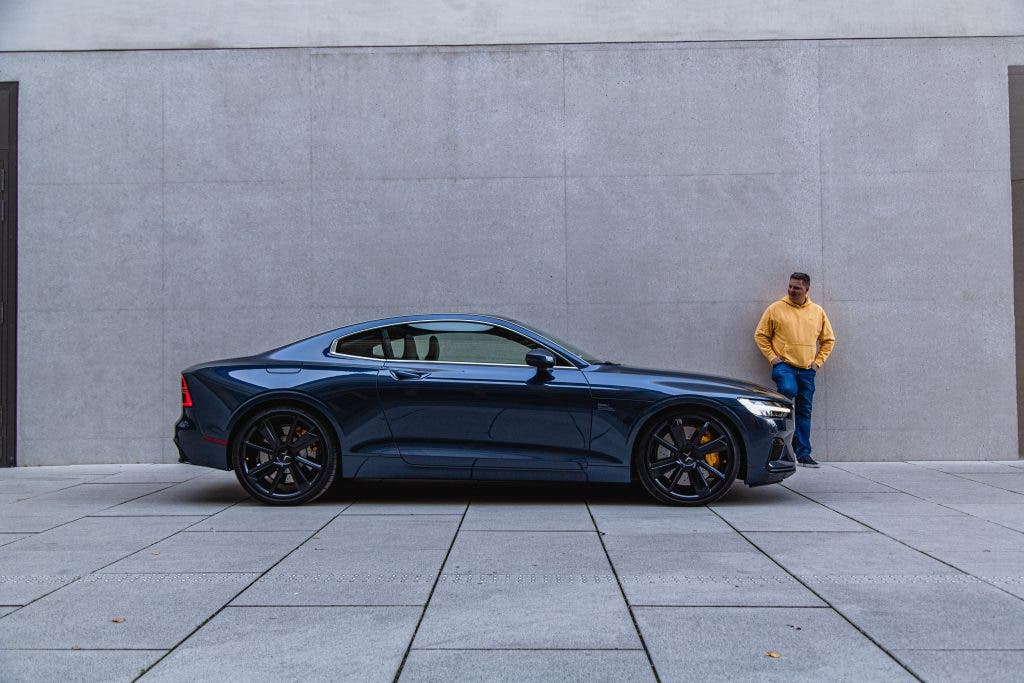Polestar 1 – the Trojan horse
Plug-in hybrids often have an image problem: with an electric range of 130 km and a DC charging connection, the Polestar 1 is a car that proves that PHEVs can be a real and sensible alternative to pure combustion engines.
The Polestar brand is probably unknown to most. The Polestars story began as a Swedish racing team, which among other things modified Volvo for racing. In 2009 Polestar Perfomance became an official partner and offered tuning for Volvo vehicles. In 2015, Volvo bought the brand. In 2017 it was officially announced that Polestar would become an independent brand that will specialize in electrified vehicles.
Although the relationship to Volvo is of course noticeable on closer inspection, I was able to convince myself at a driving event for the Polestar 2 that Polestar is its own brand, which has a good helping of startup mentality. In my driving report on the Polestar 2 I wrote:
“At least for the moment, I believe that starting a new brand was one of the best steps in creating a manufacturer that really has electricity in its blood instead of gasoline.”
The Polestar 2 really impressed me at the first driving event. If you want, you can read more information on my private podcast.
In order to bridge the time until I can get the Polestar 2 as a test car, I asked to be able to test the Polestar 1.
With a price of 155,000 €, 609 HP system power and a maximum torque of 1000 Nm, the Polestar 1 is certainly not a car for the masses. Rather, I believe the Polestar 1 is some kind of Trojan horse.
Contents
Technical data Polestar 1
A system output of 609 hp is certainly something that should put a smile on the face of every sports car enthusiast. But the other technical data of the Polestar 1 is also impressive:
| Performance petrol engine | 309 PS (227 kW) b. 6,000 rpm |
| Electric motor power | 2 x 85 kW (116 PS) = 170 kW (323 PS) |
| Torque electric motors | 2 x 240 Nm = 480 Nm |
| Power starter generator | 52 kW (68 hp) |
| Torque ISG starter generator | 161 Nm |
| Overall performance | 609 hp (448 kW) |
| Total torque | 1,000 Nm |
| drive | Front-wheel drive, electric four-wheel drive, 8-speed automatic |
| 0-100 km / h | 4.2 s |
| Max. speed | 250 km / h |
| Max electric speed | 160 km / h |
| Consumption according to the manufacturer | 0.7 l / 100 km |
| CO2 emissions | 15 g / km |
| Battery size | 34 kWh |
| Electric range (WLTP) | 124 km |
| Charging power | max. 50 kW (DC) |
Another special feature of the Polestar 1 is that the combined electric motors have more power than the combustion engine. A WLTP range of 124 km is also a value that you would otherwise never see in PHEV – just as little as the possibility of charging the Polestar 1 using a DC fast charger.
Hybrid vehicles – Trojan horses?
At the beginning I said that the Polestar 1 is something of a Trojan horse. I would like to explain this a little more precisely below. I already spoke of a sensible car with the Porsche Cayenne Turbo S E-Hybrid [Link]. The Polestar 1 goes one step further than the 680 hp SUV from Porsche.
When I test cars with more than 400 hp, the rule is that I have to fill up the car within the first three days. The Polestar 1 is an exception here.
Small update for #Polestar 1 today after 7 days and 1,020 km just refueled 51 l for the first time. Right now lunch at the #losteria and parallel fast charging @Fastned pic.twitter.com/7InfHjibPa
– Mark Kreuzer (@kramkr) September 16, 2020
Usually, the consumption of the first few days with high-powered vehicles is never meaningful, because I would like to get to know a car’s acceleration better, especially at the beginning.
The fact that I managed to get by with the Polestar 1 for the first 7 days without even having to refuel once really impressed me. This also under the aspect that I did not have my own wallbox at home during the test period and always charged the car with the 230 V charger.
Like most hybrid vehicles, the Polestar 1 has different driving modes.
Pure, hybrid, power. In pure mode you drive purely electrically, in hybrid mode the car automatically switches between combustion engine and electric motor, and in power mode the combustion engine runs continuously while the car is geared towards maximum performance.
In fact, I’ve been in hybrid mode most of the time.
Due to the high electric range, I was able to manage my everyday life almost exclusively electrically during the first 7 days. Although the gasoline engine also ran along when driving faster, for my part I drive more relaxed than sporty in everyday life.
I didn’t really pay attention to how realistic the 124 km range is in everyday life – because even if a little more kilometers had to be covered in one day, the last part of the route was taken over by the combustion engine.
Personally, I consider the “range fear” that is often quoted with electric cars to be a nonsense that is mainly used by those drivers who have never really driven electrically before. When driving a hybrid vehicle, this fear does not exist anyway. The electric, almost silent, gliding is a nice way to drive in everyday life – especially since it is also easy on the wallet. So you gradually get used to being almost always electrically powered; it imperceptibly becomes a new standard.
Which brings us to the Trojan horse: this hybrid vehicle secretly ensures that people change their view of electric mobility.
But since I regularly have long-distance journeys of 400 km and more, the combustion engine continues to be an important factor for me – because losing just 5 minutes to refuel on a long journey should not be neglected for frequent drivers.
But here, too, I experienced an unconscious rethink. When I arrived at my destination, I looked for a charging station and charged the car for my 2.5-hour appointment – even if the way from the charging station to my appointment was another 15-minute walk.
To be honest, in other hybrid vehicles with less electric range, I probably wouldn’t have done this.
On the way back from the appointment, I had to stop for fuel, which I actually combined with a lunch break and a 35-minute DC fast charge. Nice for me: I hung the car on the charging station because I wanted it and not because I had to.
So when the Polestar 1 enters a driver’s life, it conveys the electrolifestyle in a very subliminal way and is therefore clearly a Trojan horse.
Design Polestar 1
Another point speaks for my “Trojan horse” theory: the design of the Polestar.
As long as an electric car does not have a decidedly futuristic design, it is difficult to distinguish it from a combustion engine (the best example of this is the Opel Corsa e). The angular and clear design of the Polestar 1 attracts a lot of attention. The effect is enhanced by the silent movement in the city.
The fact that the Polestar allows a view of its internal electrical values every time the trunk is opened simply fits into the coherent overall concept of the design.
Polestar 1 impression
The Polestar 1 is not a car for the masses. The price of € 155,000 alone puts it in a category of vehicles where absolute perfection is expected. In fact, the Polestar 1 does not have any real weaknesses in my test – but unfortunately no real highlights either.
You can tell immediately that the Polestar 1 is a special car. The design and the unfamiliar logo attracts attention – especially when it glides silently through the city center.
For me personally, the Polestar 1 is more proof of the Polestar company that they are serious about the path to electric mobility. Perhaps the “1” is a kind of masterpiece with which the Polestar wanted to prove his skills. You can still see some parallels to Volvo models, but I’m not questioning the brand’s independence.
The success of the Polestar brand will not depend on the Polestar 1, but on the Polestar 2. The Polestar 1 meanwhile has the potential to become a classic. The limited number of pieces in combination with the hybrid technology makes it a unique vehicle which degrades other comparable coupes in the same price range to “mainstream” vehicles.
It is easy to fall for the Polestar 1 and, like the wooden horse in Troy, the acquisition could have far-reaching consequences for the owner’s view of the world of internal combustion engines.
For those of you who want to have more impressions of the Polestar 1, I would like to give you my own private podcast for the Polestar 1 put it to the heart or the video:









